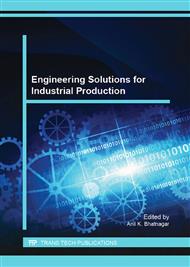p.314
p.319
p.324
p.329
p.334
p.339
p.347
p.352
p.357
Optimal Control Strategy at the Main Reduction Process for Lunar Spacecraft Soft Landing
Abstract:
According to the law of energy conservation and the second law of Kepler, this paper obtains the spacecraft velocity in perilune and apolune. Based on trajectory inversion thought, this paper obtains position and velocity direction in the perilune and apolune. For the five sub stages of soft landing, this paper discusses the optimal control strategy: establishing optimization model of genetic algorithm for the main deceleration section, the terminal constraint condition is reflected on the fitness function through the penalty function, combined with linear iterative thought, the winner engine thrust and direction angle are obtained. Aiming at the rapid adjustment period, the spacecraft angle change is done equivalent decomposition and discrete linear, so the thrust can be obtained through the angle change provided by adjusting attitude engine and combined with rigid body motion law.
Info:
Periodical:
Pages:
334-338
Citation:
Online since:
July 2015
Authors:
Price:
Сopyright:
© 2015 Trans Tech Publications Ltd. All Rights Reserved
Share:
Citation:


